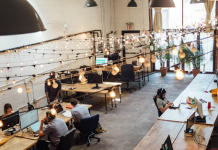The siding on your home is the first defence against the elements. But with so many different types of siding materials available, knowing which one is right for you can be challenging.
In this post, we’ll explore the pros and cons of different home siding materials so that you can decide on your next siding upgrade.
Vinyl Siding
For a good reason, vinyl siding is one of the most popular types of home siding. It’s affordable, easy to install, and comes in various colours and styles. Vinyl siding is also low maintenance, requiring occasional cleaning with a hose and a mild detergent.
However, there are some downsides to vinyl siding. It’s not the most durable option, and it can become brittle and crack over time. Additionally, vinyl siding is not the most environmentally friendly choice, as it’s made from PVC, which can be difficult to recycle.
Wood Siding
Wood siding is a classic choice that can give your home a timeless look. It’s also a sustainable option, as wood is a renewable resource. Wood siding has many styles, including clapboard, shingle, and board-and-batten.
However, wood siding requires more maintenance than other types of siding materials. It needs to be painted or stained regularly to prevent rot and is vulnerable to insect damage. Wood siding is also not the most durable option, and it can be expensive to replace if it becomes damaged.
Fiber Cement Siding
Fibre cement siding, such as James Hardie home siding, is quickly becoming a popular choice for homeowners. It’s made from a mixture of cement, sand, and cellulose fibres, which makes it incredibly durable and resistant to fire, pests, and rot.
Fibre cement siding comes in a wide range of colours and styles, including options that mimic the look of wood or stucco.
One of the biggest advantages of fibre cement siding is its longevity. It can last for 50 years or more with proper maintenance, making it a great long-term investment. Fibre cement siding is also energy-efficient and low-maintenance, requiring only occasional hose and mild detergent cleaning.
The downsides of fibre cement siding are its cost and its weight. It can be more expensive than other types of siding materials, and it’s heavy, which can make installation more challenging. However, the benefits of fibre cement siding often outweigh these downsides.
Brick Siding
Brick siding is a classic choice that can give your home a stately, elegant look. It’s also incredibly durable, with a lifespan of up to 100 years. Brick siding is fire-resistant, low-maintenance, and energy-efficient, making it an excellent choice for homeowners who want a long-lasting, low-maintenance siding material.
The downsides of brick siding are its cost and its weight. It can be expensive to install, and it’s heavy, which can make installation more challenging. Additionally, brick siding can be prone to cracking and difficult to repair.
Metal Siding
Metal siding is a durable, low-maintenance option that can give your home a modern, industrial look. It’s resistant to fire, pests, and rot and can last 50 years or more with proper maintenance. Metal siding is also energy-efficient, as it reflects heat away from your home, which can help lower your energy bills.
The downsides of metal siding are its cost and its appearance. It can be more expensive than other types of siding materials, and some homeowners may not like how it looks on their homes.
In conclusion, there are many different types of home siding materials, each with pros and cons. So, it’s better to talk to a roofing contractors when choosing home siding.







